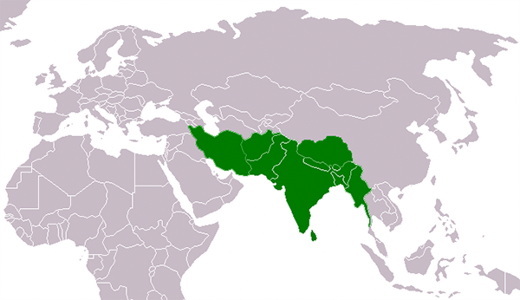The Foreign Direct Investment (FDI) South Asia attracted in 2013 stood at $35.6 billion, a 10 percent growth over the year before. In West Asia, it had a downward spiral for the fifth year in a row due to tensions sweeping the region, and declined 8.6 percent to $44.2 billion in 2013. The overall foreign investment absorbed by South and West Asia surpassed $79.8 billion, a 1.5 percent drop over 2012.
The Institute for Trade Studies and Research (ITSR) has released an article by Amir-Reza Souri, Ph.D., on FDI in South Asia which is in the grip of unrest and political uncertainty. The following is the translation of the article which also looks at the good chance Iran stands of absorbing more foreign investment:
A look at regional countries shows that India tops the list of countries with highest absorption of FDI. With a 17 percent rise over the previous year, India secured $28.2 billion in foreign investment in 2013. India which has opened its services sector to foreign investors and developed its retail industry claimed a 35.5 percent share of FDI in the region.
Turkey ranks second with its overall FDI standing at $12.9 billion. Germany has the biggest share of foreign investment in Turkey followed by the Netherlands, Russia, Azerbaijan and Austria. The country’s finance, energy and production sectors have taken in $3.7 billion, $2.5 billion and $2 billion in FDI respectively. Turkey continues to diversify its foreign investment sources, trying to pull in finances from India, Japan, Russia, Malaysia, and Persian Gulf states as well as the US.
The United Arab Emirates is next. The UAE, which attracted $10.5 billion in FDI in 2013, experienced an increase in FDI absorption for the fourth consecutive year. The Persian Gulf country saw its aluminum, petrochemicals, tourism, transportation, and real estate industries grow after it increased foreign investment, and banks were encouraged to grant loans to real estate owners. This demonstrates that the country successfully managed to ride out the 2009 economic crisis.
Foreign investment in Saudi Arabia landed in negative territory for the fifth year running. In 2013, it stood at $9.3 billion, dropping 24 percent over the previous year. As a result Saudi Arabia slipped from the region’s third largest country to the fourth as far as foreign investment went.
More than one million foreign workers left the kingdom in this period. It comes as mega investment projects are to be carried out in Saudi Arabia’s refineries and petrochemical plants. The gap has created an imbalance between supply and demand in the country.
Iran stands fifth. Foreign investment has mainly been funneled into oil exploration and production. According to a report by the United Nations Conference on Trade and Development (UNCTAD), as a result of sanctions imposed against Iran, FDI declined to $3.0 billion in 2013, a 36 percent decrease from $4.7 billion in 2012.
Although Iran has huge potential for attracting FDI, it has absorbed a meager $41 billion over the past 23 years; this amounts to four percent of the money poured into the region, whereas rival countries such as Saudi Arabia and the UAE have claimed 21 and 11 percent of foreign investment in the region respectively.
Iraq is sixth in the region. Its foreign investment, mainly in hydrocarbon reserves, climbed 20 percent over the year before to hit $2.9 billion despite the instability of the central government.
Lebanon comes after Iraq. Its FDI reached $2.8 billion in 2013, a 24.3 percent decline on the year before. Persian Gulf Cooperation Council (PGCC) members were the main foreign investors who put their money in Lebanon’s real estate.
The eighth country is Kuwait which oversaw the inflow of $2.3 billion in FDI in 2013, 41 percent down from $3.9 billion in 2012.
Jordan and Oman are among a handful of countries in the region which had growing foreign investment despite regional unrest. They attracted $1.8 and $1.6 billion in 2013, showing 20 and 60 percent growth respectively.
A look at FDI in the region shows that a downward trend in Saudi Arabia and Qatar since 2009 and a steady rate in Kuwait and Iraq – foreign investment has improved in some regional country such as the UAE, though – are mainly to blame for a drop in regional investment.
The regional prospect of foreign investment, especially in PGCC states, is bleak because of political uncertainty, even in countries which are not directly involved in regional unrest. Huge hydrocarbon deposits are credited for a relative rally of FDI in some regional countries. This comes as some companies have shown interest in making a comeback to the US market which is the [world’s] biggest oil and gas consumer because new technologies have helped this country extract hydrocarbon resources (oil sands).
On the other hand, the growing oil and gas revenues have swelled PGCC countries’ foreign exchange reserves and prompted them to send money abroad. In Qatar and Kuwait, for instance, the capital flight in 2013 quadrupled and doubled – respectively – over 2012.
This trend is projected to persist due to the small size of PGCC economies and their lack of diversified businesses. It has opened up an opportunity for Iran – a stable country in the region – to adopt appropriate policies to attract uninvested capital.
